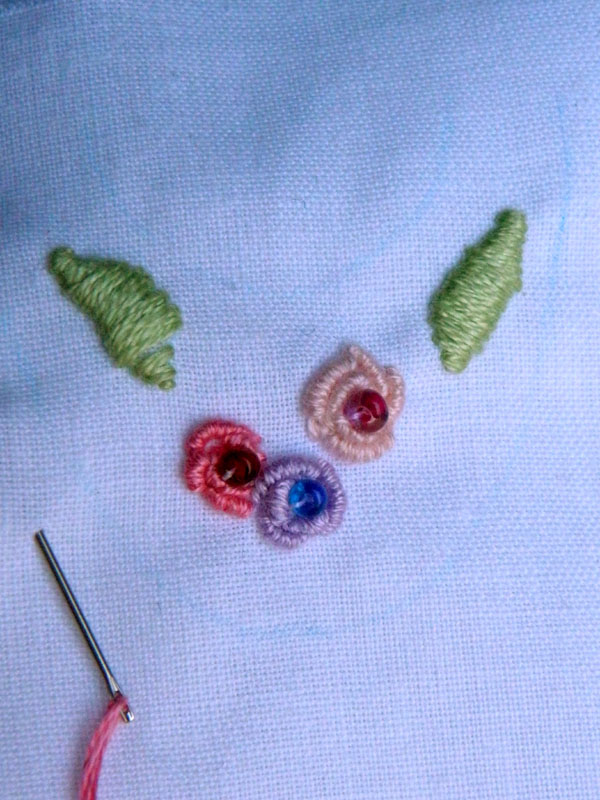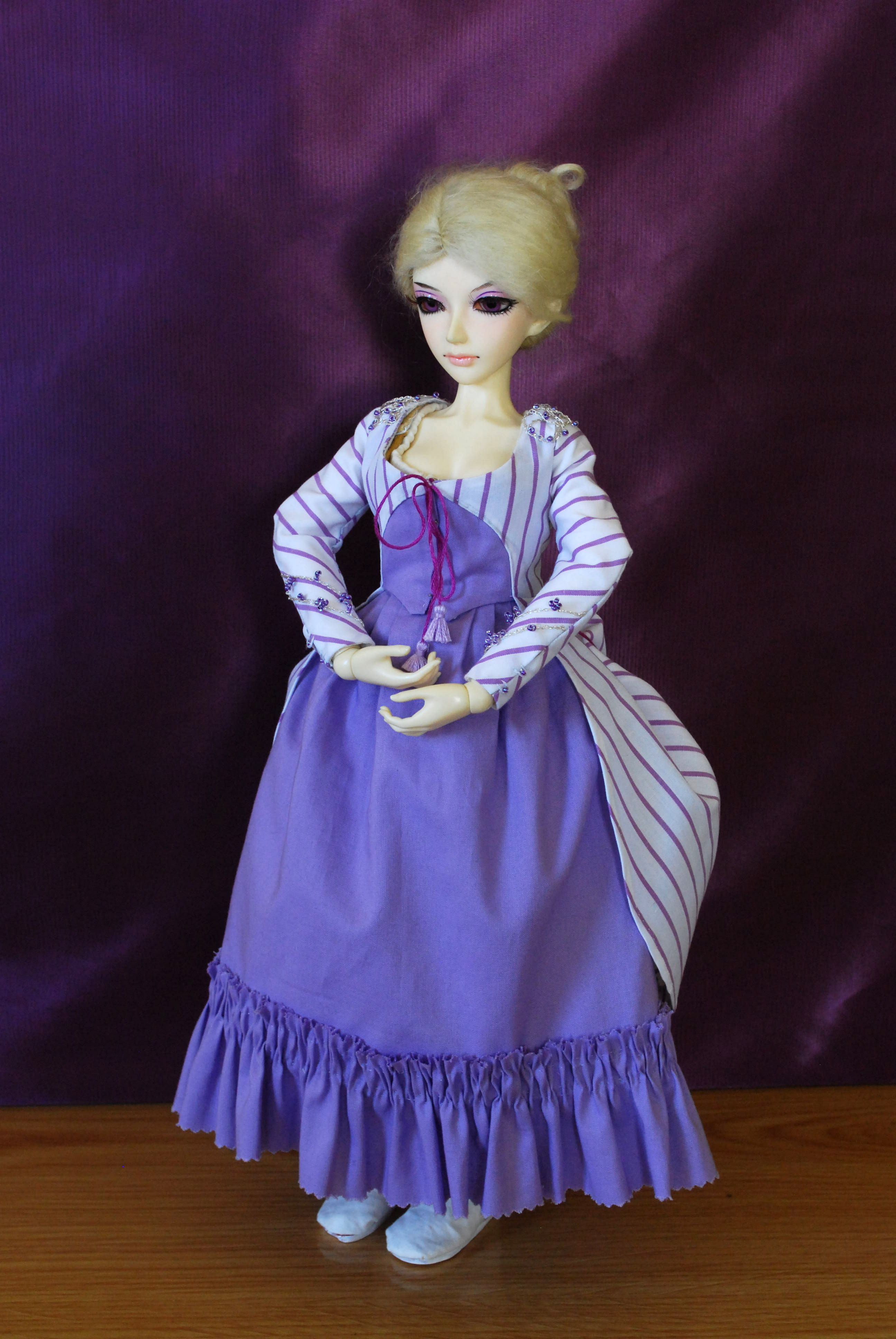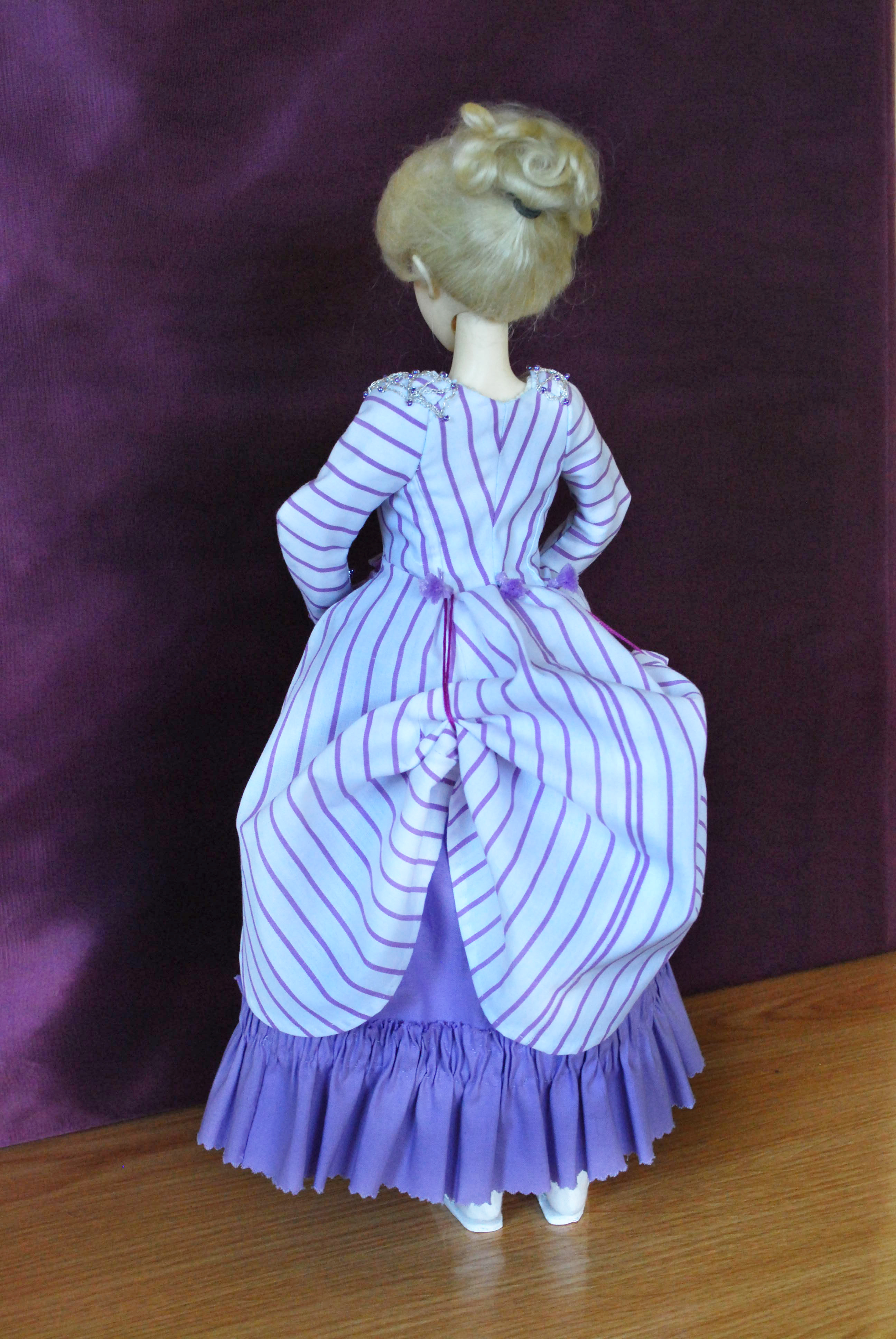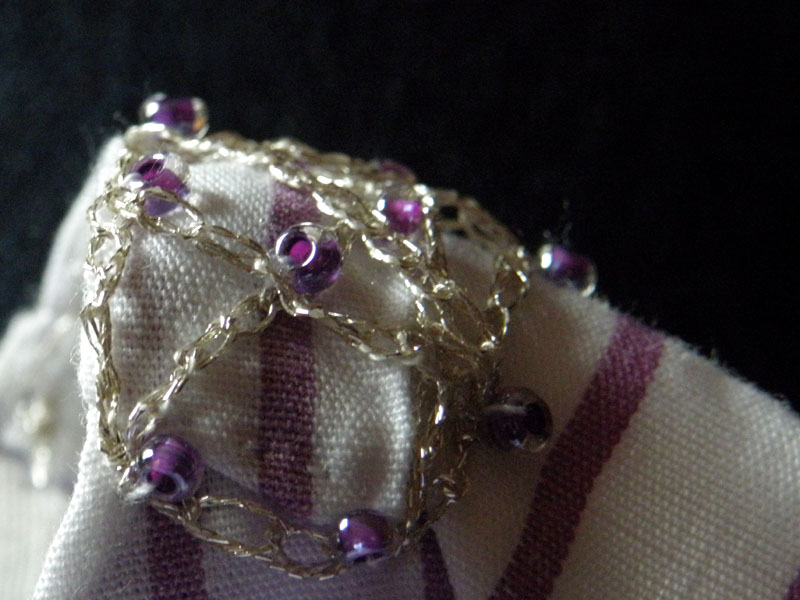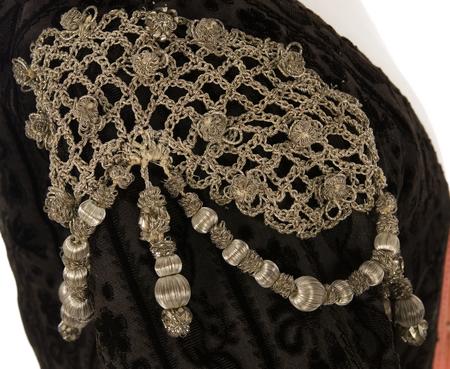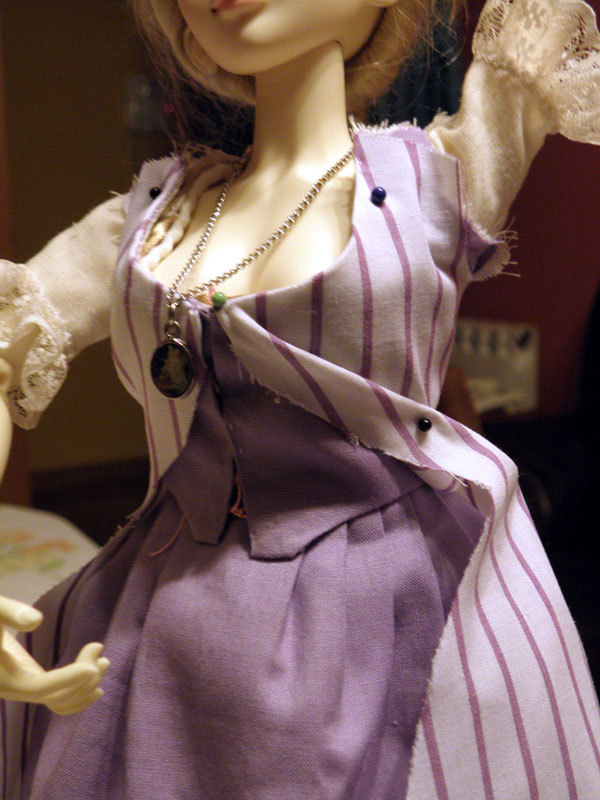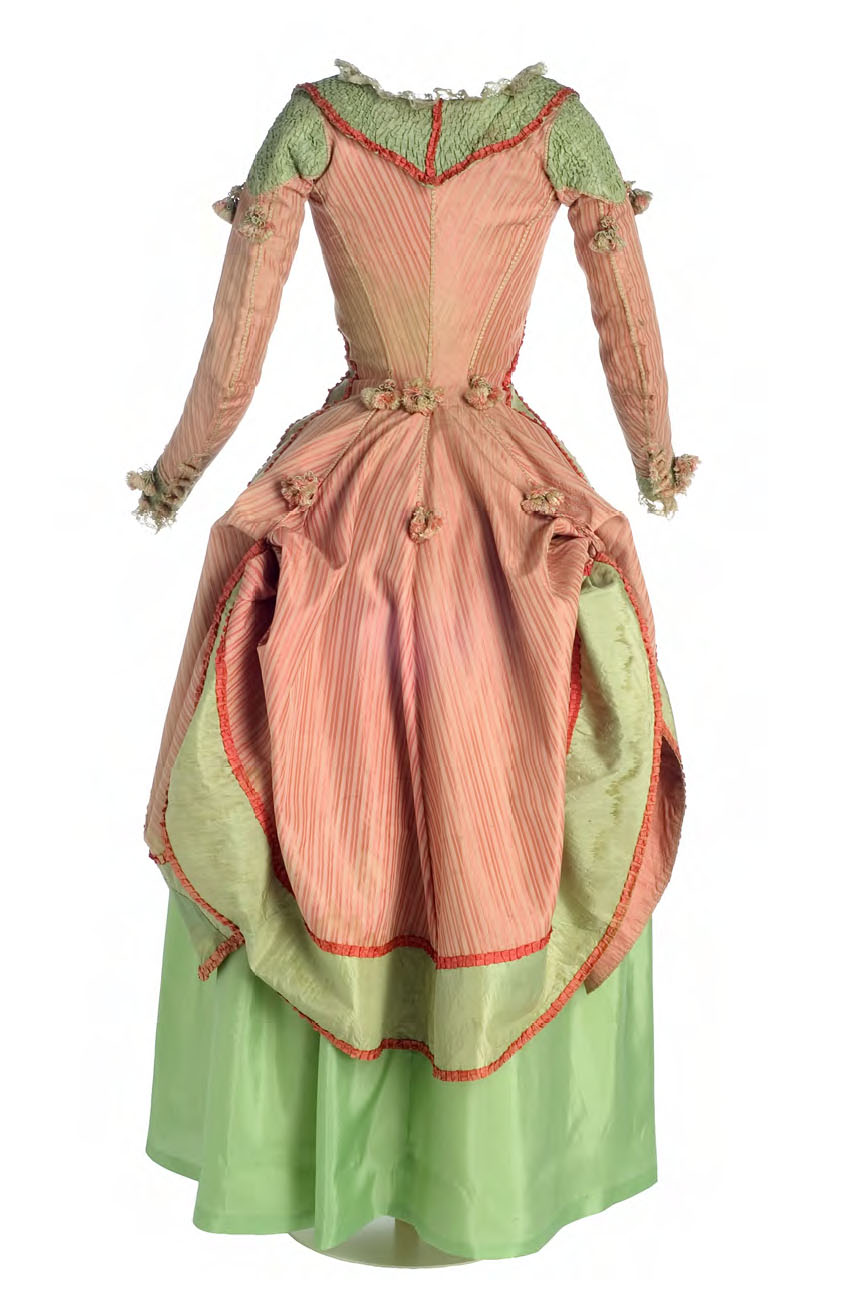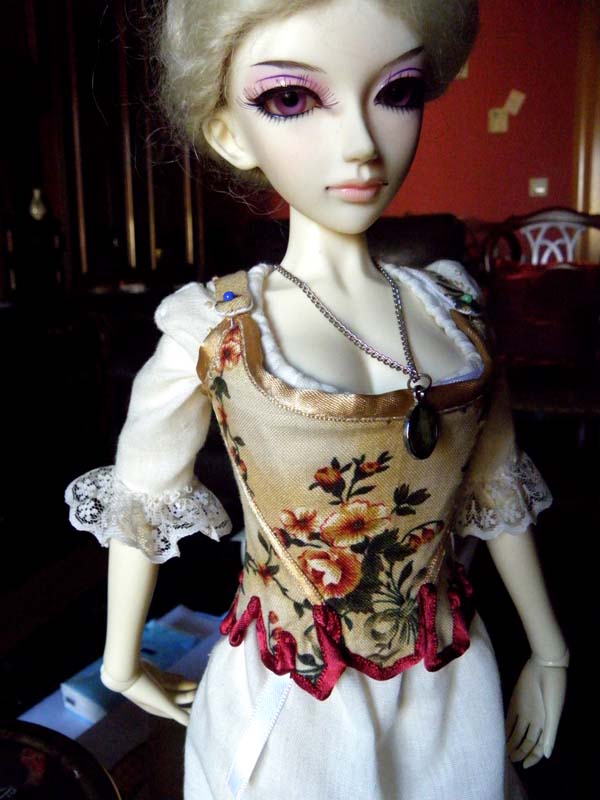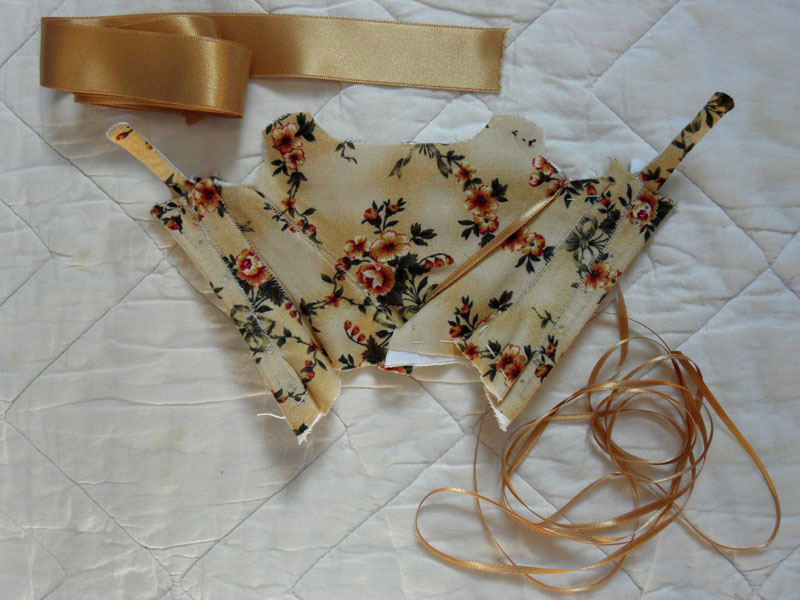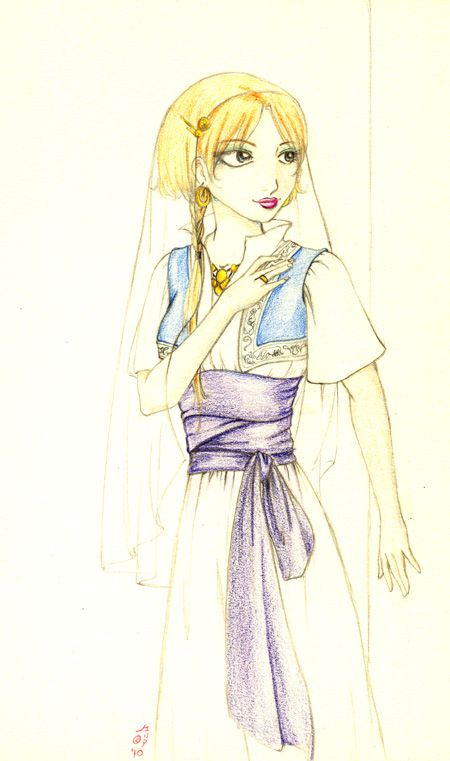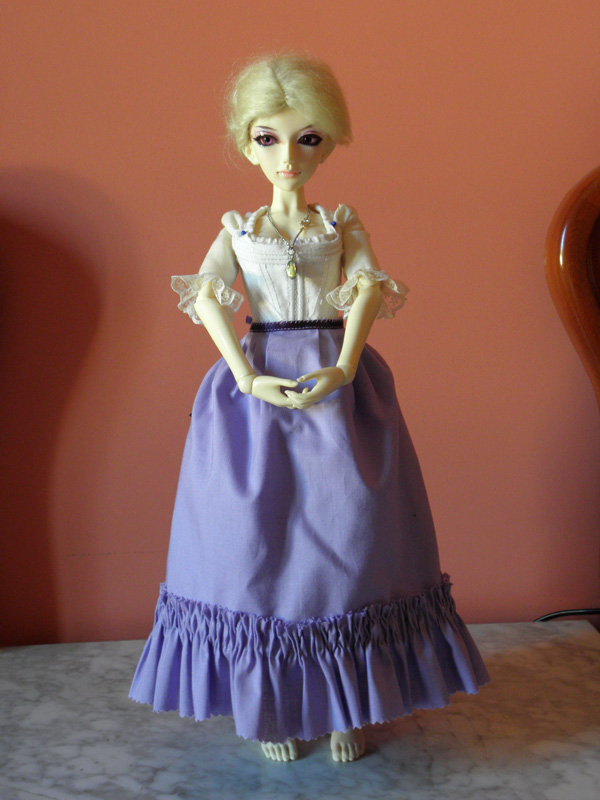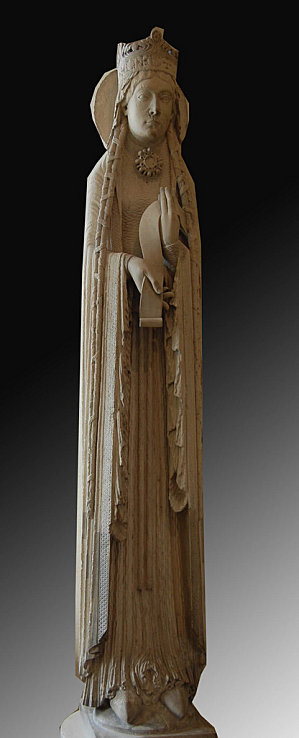
Notre Dame de Corbeil - Ejemplo de "bliaut" francés
Hace ya algún tiempo que hice un post preguntando si alguien sabía de dónde salía el diseño de lo que actualmente se vende como «brial» en las tiendas de ropa medieval, y hoy voy a deciros qué es realmente un brial.
A la izquierda tenéis un ejemplo del «bliaut» francés del siglo XII, que es de donde proviene, etimológicamente y probablemente también en cuanto a aspecto real, nuestro «brial». Como podéis ver, se parece más bien poco a lo que venden por internet.
Un brial femenino en el siglo XII es un vestido, generalmente con cuello redondo decorado con bordados, con mangas ajustadas hasta el codo y abriéndose en campana hasta hacerse extremadamente anchas en la muñeca y falda larga hasta el suelo. Solía ajustarse al cuerpo atando los costados, por lo que la parte media del cuerpo quedaba fruncida, que es lo que le da el aspecto más característico.
Esta descripción que he dado parece muy clara, pero en realidad hay muchas diferencias entre los briales de diferentes paises e incluso entre los que se pueden ver en las catedrales francesas, donde está su origen. Una de las páginas que mejor explican el tema es «The Bliaut throughout 12th Century Europe«, en inglés pero con muchas imágenes, y al final con las teorías sobre la confección. Personalmente reniego de la versión victoriana del asunto, que ponía una especie de «corsé» sobre el vestido, porque eso haría que se notasen mucho los pechos y la estética de la época era parecer plana, tal y como se ve en muchas estatuas.
En España después pasamos al siglo XIII y posteriores, dónde el nombre de brial se mantuvo para los trajes confeccionados con telas muy costosas, ceñido en la cintura y llegando hasta los pies, según las entradas en los diccionarios antiguos que aparecen en el Tesoro Lexicográfico de la RAE. Cosa curiosa, el Museo del Traje denomina brial en su catálogo no a los vestidos enteros del siglo XVIII, sino a la falda que iba bajo ellos y de la que sólo se veía un trozo, por lo que se puede deducir que el nombre se siguió utilizando, pero el tipo de prenda varió con las modas.
Por cierto, lo más aproximado al estilo del «brial» de las tiendas online que he visto en los textos e imágenes históricas son ciertos vestidos renacentistas italianos que Raisha me puso en un comentario.

